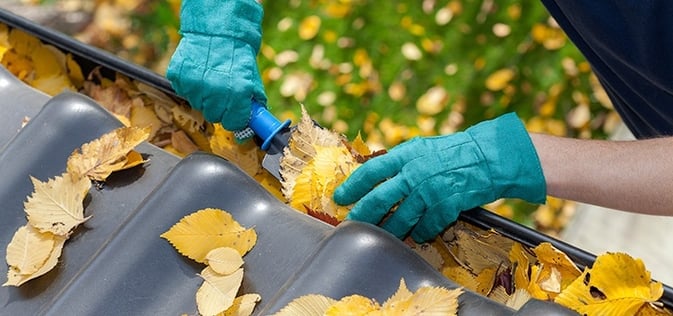Cold weather will be here soon! Are you prepared? Here are some tips from the Department of Energy to prepare you for the cold months ahead.

1. CLEAN OUT THE GUTTERS
All the leaves and grime that you neglected while you were out swimming, hiking, or riding your bicycle this summer have built up in your gutters. If left full of debris, clogged gutters and drains can form ice dams that prevent your drainage systems from working properly. This can lead to water seeping into your home, which—as seen in the Conquering Moisture blog—can lead to all sorts of issues and extra energy costs. Save yourself the hassle of repairing a leak by simply cleaning your gutters and drains now. When you do, run water through the gutters to check for misalignments that could also cause water damage.
2. KEEP THE OUTSIDE AIR OUT AND THE INSIDE AIR IN
We talk about this a lot, but it is hugely important for your energy savings to ensure there are no air leaks in your home. Warm air will escape out of any cracks and can make your heating system work harder and cost you more to heat your home. Use caulk to seal cracks and openings between stationary house components like a door frame and weatherstripping to seal components that move like an operable window.
3. SHOW SOME TLC TO YOUR FURNACE
Your furnace may be a distant memory since you last powered it on, but before the cold weather descends and you must reluctantly switch it on, give it some TLC. Clean your furnace annually each autumn. Sediment build-up can cause your system to work less efficiently or potentially become a fire-hazard. Cleaning your system and getting it inspected will reduce the risks.
During the winter try to change your filter regularly; a dirty filter will decrease air flow and energy-efficiency. And if your furnace is ready to be replaced, buy an energy-efficient model. It will save you money and energy each month!
4. GET YOUR DUCTS IN A ROW
Your ducts are often times out of sight, out of mind, tucked away in the attic or basement, but a home with central heating can lose about 20% of the air that moves through the duct system. Make sure your ducts are in order by properly sealing and insulating them. Tightly sealed and insulated ducts can potentially reduce your annual energy bills by $120 or more!
5. LIGHT THE WAY
The fall and winter months mean less daylight. I know we are all keen on saving energy, but we don't want any falls while you carry in your groceries. Luckily, you can still use your outdoor lights without wasting money and energy. Because outdoor lights are typically left on for long periods of time, buying ENERGY SAVER products and bulbs to light your outdoor pathways or porches can save a lot of energy. ENERGY STAR even makes CFL and LED flood lights that can withstand snow and rain. As an extra energy-saving effort, look for ENERGY STAR products that come with automatic daylight shut-off and motion sensors. And be sure to decorate with LED holiday lights to reduce the cost of decorating your home for the winter holidays.
Colder weather is on its way, and using these tips will help you stay warm and cozy, while saving energy and money in your home. Stay tuned for part two with five more tips for getting your home ready for fall and winter!
(Original article & picture from: http://energy.gov/energysaver/articles/cozy-colder-weather-5-ways-prepare-your-home-fall-and-winter-part-1)
